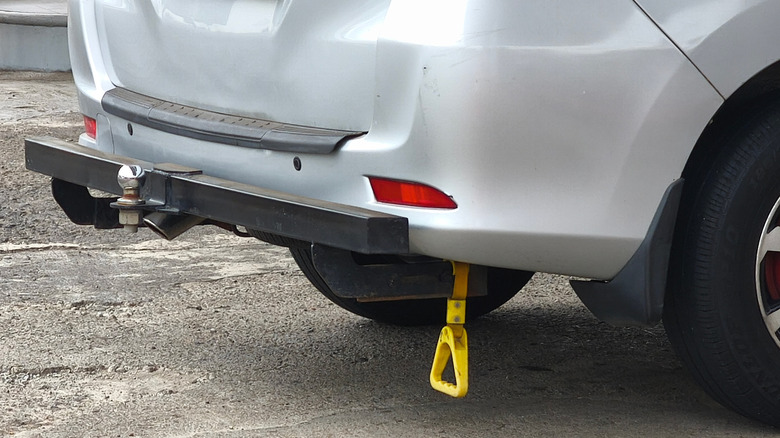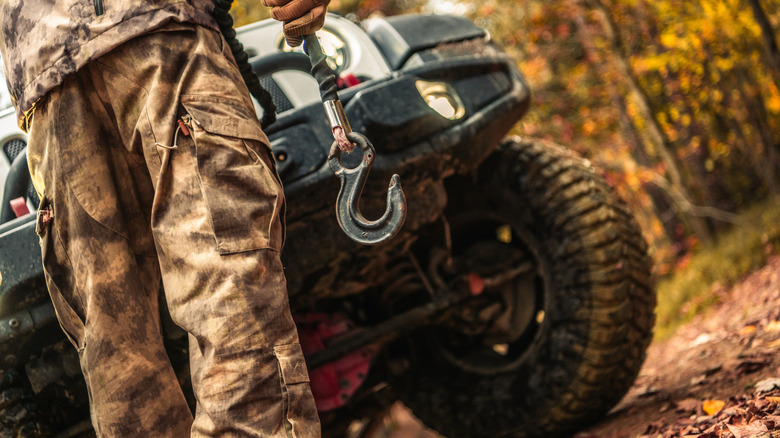Why Using A Tow Ball For An Off-Road Recovery Could Be Fatal
Having the right tools for the job is essential, no matter what you're doing. In some cases, not having them is merely a nuisance. It may slow you down or even ruin the fun. However, in others, using the wrong tool can be far more serious. In off-roading, the stakes are always high, and a simple mistake can not only ruin the fun, but also turn deadly. So, why is using a tow ball for an off-road recovery not just a bad idea, but a potentially fatal one?
Because it's simply not the right tool for the job. Tow balls are designed for pulling trailers. They are not designed for handling the sudden loads involved in an off-road recovery. When used as such, they can shear off under tension and become deadly projectiles – turning what should've been a rescue into a catastrophe. There are many dangerous towing mistakes one can make, but a tow ball off-road recovery is a recipe for disaster.
Is a tow ball ever safe for an off-road recovery?
No, using just the tow ball to recover a stuck vehicle is never going to be safe as there are always better options. Even if you were to do it slowly while recovering a particularly lightweight vehicle, it's still not recommended, although this can't be even called a true off-road recovery. Manufacturers like ARB, Toyota, Jeep, and some official authorities strongly advise against it. The physics in towing and snatch recoveries are simply worlds apart.
While towing, the load is spread evenly and it does not dramatically increase or decrease. Moreover, a trailer is run on wheels, which means that it provides little active resistance to the pulling motion. A snatch recovery exerts massive forces instantaneously, sometimes up to 8.2 tons. If we also take into account that off-road recovery often requires multiple jolts to get going, total forces can easily be measured in dozens of tons.
Although also not recommended, when towing over capacity, the potential consequences usually include gradual build-up of stresses, not sudden bursts of energy that can turn an object into a missile. Since most automakers strongly advise against tow ball recoveries, any damage that does occur is unlikely to be covered under warranty. Your insurance might also view it as misuse or negligence, leaving you personally liable for any damage.
Performing an off-road recovery safely
The first thing to keep in mind is to always use the vehicle's designated recovery points because these are rated and designed to handle pulling forces much better than tow balls. It's also very important to use certified recovery equipment such as recovery straps, soft shackles, or robust D-rings. Force direction also matters, which is why relying on gear that applies it in line with the mounting axis is crucial – always avoid vertical or angled pulls.
Most importantly, never stand in line with a recovery strap, a winch cable, or in front/rear of the vehicle that's being recovered. Using a recovery damper is a good idea since it reduces the recoil of a strap if it fails and goes off. Investing in a winch is also a mod you'd want to do when taking your truck off-road. Regardless, always check all of your gear before use, be sure to store it correctly, and prioritize slow and controlled pulls as opposed to violent yanks.


